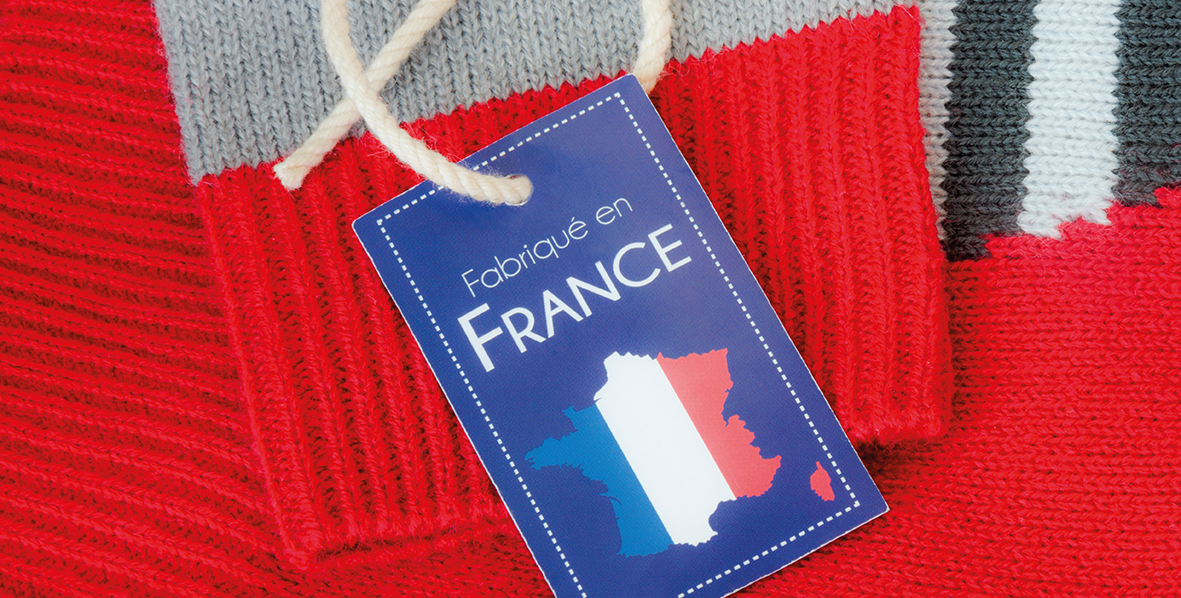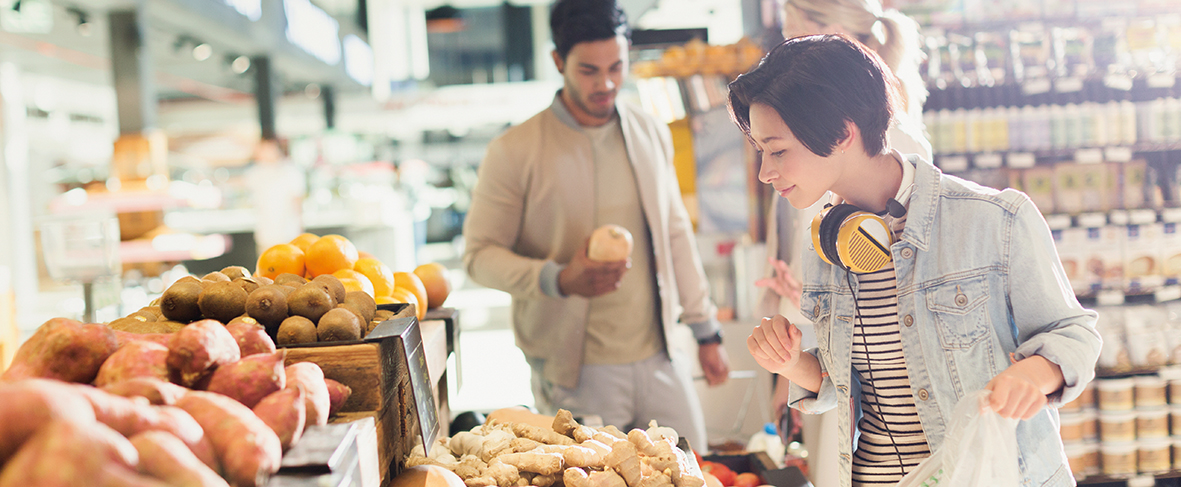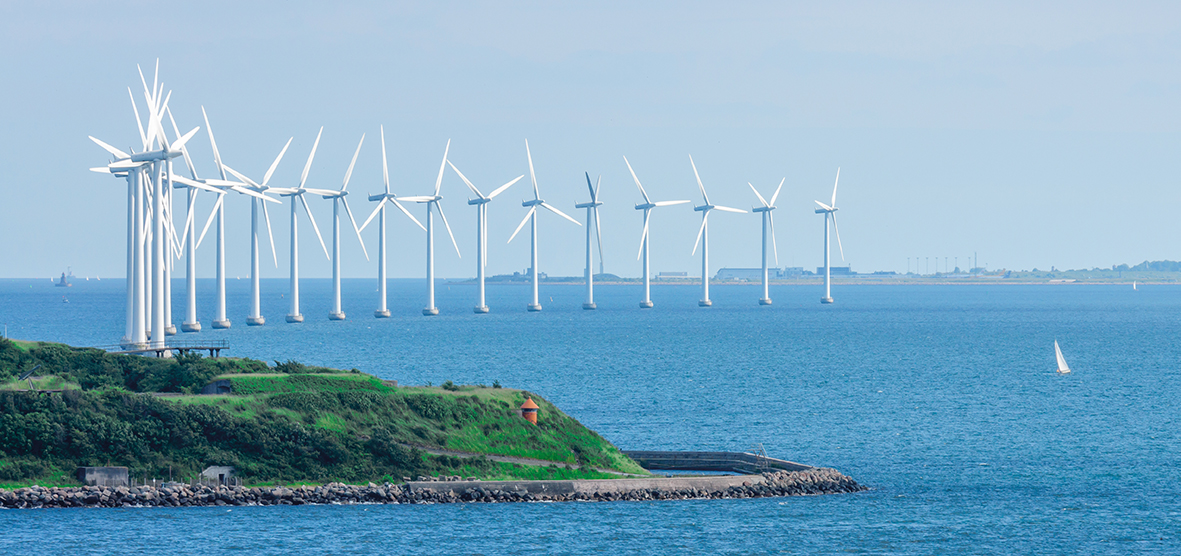Special feature: happiness is close to home


LOCAL INITIATIVES ARE EVERYWHERE
Locavores. A contraction of the Latin words “locus” (place) and “vorare” (swallow, devour), “locavore” is a portmanteau that could literally be translated as “he who swallows the place”. The term clearly implies that the place of consumption takes precedent over the actual item consumed. It is therefore acceptable to define locavores as people who choose to consume products and food made or produced near them, within a radius of 100 to 250 kilometres at most.
While the notion of “buying local” traditionally applies to food, it has now expanded to all aspects of daily life: cosmetics, textiles, energy, etc. Therefore, it is not always easy to adhere to the 200 km rule. Thus, every consumer gains the ability to set their own limits. However, one lesson we can take from this is that Europeans see so-called “local” products as being those manufactured in their own region.

Also known as localism, “local consumption” is more widely inspired by the 20th century economic theories of Leopold Kohr, Ernst Friedrich Schumacher and Kirkpatrick Sale, who were in favour of scaling down all political, economic and social affairs to a local level.
Although it was initially the preserve of a few individuals with a penchant for New Age 2.0, local consumption, or “localism”, has become a source of reassurance, not to mention a way of getting in touch with one’s roots and forging social ties. Purchasing more local products (ideally made the traditional way, but at the very least manufactured in the same country) could be an all-encompassing solution that meets everyone’s requirements.
The origins and pioneers of localism
The Local First movement began in the 1980s with initiatives that remain in place in the United States today, such as the Business Alliance for Local Living Economies (BALLE) and the American Independant Business Alliance (AMIBA).
In France, they began to appear in the early 2000s in the form of AMAPs (associations supporting local farmers). Based on the same principles as their American equivalents, AMAPs allow consumers to sign up for a weekly crate of fresh fruit and vegetables produced by groups of market gardeners, which are often organic but are always delivered directly by the producers.
As early as 1978, those living in the Canton of Geneva could buy produce from the Jardins de Cocagne cooperative. The concept later spread to other parts of Europe, with the creation of Food Co-ops in the United Kingdom, fair purchasing groups in Italy and GASAPs (fair purchasing groups supporting local farmers) in Belgium.
A return to the soil that gives urban areas fresh meaning
If the aim is to reduce the distance between consumers and the point of production, one may as well eliminate it completely by bringing market gardens to city centres: In 2019 the Montreuil neighbourhood of Paris will host La Cité Nourricière, an “urban food self-sufficiency solution” that will produce its own fruit and vegetables on the outskirts of the French capital, some of which will be cultivated using ancient methods.
In the Netherlands, the Rooftop Revolution project has already enabled the creation of 14,000 m² of green roofs in three different cities, while with Optimus Garden in Spain, urban agriculture is finding its way into living spaces (restaurants and homes), thanks to a specially designed vertical hydroponic growing system.
Could retail be a source of well-being and reassurance?
Today, collaborative supermarkets are surfing a wave of short supply chains and consumers who are looking to make meaningful choices when they shop, in part so as to fuel a sense of neighbourhood community. Tom Booth, the founder of La Louve, Paris’s first cooperative and collaborative supermarket, could not have been clearer when he was interviewed for Europe 1’s Circuits Courts programme: “Customers of La Louve feel at home in the store.” A new relationship with food shops could be dawning, together with a new way of approaching purchases that is influenced by people’s relationship with each other and their quest for meaning.
“Buying local” is not incompatible with traditional retail models. The shelves of Carrefour stores feature products produced by “C’est qui le Patron ?!” (“Who’s the boss”), “a brand with a purpose, because it promotes meaningful consumption”. Meanwhile, Système U food stores in the Vendée area have joined forces with the local producers that operate under the Juste et Vendéen brand, which was officially launched in July 2018.

Localism: a creator of jobs?
A report published by the Employment Policy Council (COE) in June 2018 backs the views of consumers. From an employment perspective, it claims that responsible consumption could allow around 150,000 jobs to be created. This would require French households to replace imported products with their French-made equivalents. If 10% of imported consumer goods were replaced by domestic products, more than €13 billion would be reinjected into the French economy.
Rossignol (skiing equipment), Repetto (shoes), Smoby and Meccano (toys) and Majencia (office furniture), among others, have been impelled to relocate all or some of their production to France, for quality and logistical reasons. Beyond the quality-cost-lead time triumvirate, proximity to major academic research and training establishments offers advantages in terms of productivity and innovation, which can be indirectly attributed to the commitment of firms to their local area.
Local complementary currencies: a source of pride and economic vibrancy
In 2015 the Basque Country made headlines with a brand-new currency, the Eusko. The local complementary currency (LCC) concept allows regions to regain a sense of identity, the latter having been eroded by various controversial initiatives. One example is France’s new regional structure. More than 60 LLCs emerged in France in the wake of the Basque Eusko, which remains the most commonly used local currency in Europe, and these are still in circulation.
Not to be outdone, various other European countries have launched their own LLCs since 2008. “If the crisis is financial, the solution will be financial”. This is the mantra that inspired the launch of the Sardex, the local currency of Sardinia (Italy). The Slovakian region of Košice was also seeking to support its economic development when, in 2015, it created the Ducat with a 1-to-1 exchange rate with the euro.
Local and digital are indissociable
It is impossible to discuss the relationship between digital tools and local consumption without mentioning the success of La Ruche Qui Dit Oui ! Launched in 2010, this web platform hosts small communities of consumers (or ruches, i.e., “hives”) and enables them to communicate directly with producers so as to buy fruit and vegetable at lower prices. There are more than 800 such hives in France, with access to more than 4,500 producers located an average of 43 km from the hives they supply. La Ruche Qui Dit Oui ! has already spread to eight other European countries, including Denmark, Switzerland and the Netherlands. Its counterparts in Italy (Loonity) and Spain (Farmidable) are also gaining success.
Digital solutions also help to address a key preoccupation of localists: combating waste. According to the website of the Too Good To Go app, one-third of the world’s food is thrown away. According to its creators, 8% of greenhouse gas emissions are generated by food waste, which would put the latter in third place behind China and the USA if it were a country. Launched in Scandinavia and already present in Germany, Switzerland, the United Kingdom, Denmark and Norway, the Too Good To Go app enables users to buy the unsold food products of local businesses, whether it be pastries from a bakery or dishes prepared by a restaurant. A win-win deal that makes both economic and environmental sense.
HEATING, DRESSING, BUILDING AND TRAVELLING… LOCALLY!
A focus on supply chain quality and security is not the sole preserve of the food industry, far from it, as demonstrated by the vast array of sectors that have somewhat unexpectedly succumbed to localist influence.
Energy
Having realised that the carbon emissions produced when transporting organic waste to a methane digester cancel out the benefits of producing biogas from this waste, British firm Seab Energy is now installing mobile containers outside residential buildings. This allows energy to be produced at the point of use.
Solar power also provides an opportunity to bring together private and public stakeholders, as exemplified by Solaire d’ici, a local democratic project set up in the Grenoble area. As for wind energy, Samso has become Denmark’s “renewable energy island”, with 21 installations. Its energy system, a significant proportion of which is owned by its inhabitants, enables the island to be totally self-sufficient.
But Germany is the country boasting the highest number of energy cooperatives. In 2017 no less than 42% of its installed renewable power capacity (100.3 gigawatts) belonged to citizens or coops.

Tourism
The Interreg initiative set up by Savoie-Mont Blanc and its Swiss neighbours was developed to answer a specific question: “How can we boost consumption of our local products, especially by tourists?”. In Switzerland, the answer comes notably from the country’s network of “Tavolatas”, farmhouse inns that offer customers menus prepared using products from the farm or the local area.
In the same vein, the city of Florence in Italy is set to tackle the rise of fast-food outlets by requiring that at least 70% of the products used in restaurants be produced locally.
Cosmetics
Who would have believed ten years ago that the cosmetics sector would embrace the neo-localist philosophy? The shift may be small, but it is a shift nonetheless. Aromatherapist Julien Kaibeck is the inspiration behind slow-cosmetique.com, which offers a full palette of products for those wishing to create their own beauty products at home. What makes the site different is that it specifies where all its products are made, which is almost always in France. Producers must also comply with a special charter, one section of which provides for “local purchasing”. Also worthy of mention is Makesenz, a brand whose products are made entirely in its Brussels laboratory or by its partners, all of which are based in Belgium.
Clothing
Manufacturing clothing locally remains a tough proposition, given that the fibres needed to make any kind of fabric are almost always produced outside our borders. Today, only linen fibre (of which France is the world’s leading producer) and hemp are the focus of short supply chain projects revolving around the manufacture of clothes. But initiatives do exist to reinvigorate certain industries locally, notably cotton production. A case in point is Jean Fil, whose polo shirts are entirely French made, “from the field to the factory”. Cotton made in the Gers, in the southwest of the country, even has a vintage.
British designer Suzanne Lee goes further still. According to her, future textile production will be hyper-local, because it will actually take place in the homes of consumers. At least that is the idea behind her BioCouture project, which allows those who sign up to “grow” their own fabrics from living micro-organisms.

Construction
In Norway, architect Oystein Elgsaas has successfully built the first skyscraper made out of timber sourced from a short supply chain: all the firms involved in the project are based within 20 km of the site. The Mjøsa Tower, the world’s tallest wooden structure (85 m), will be inaugurated in spring 2019.
Other natural materials can also be used in construction and become an integral part of localist strategies. Already present in nine regions, Chanvriers en Circuits Courts (short supply chain hemp producers) grow agricultural hemp that they transform in-house into an eco-construction material (hemp concrete) and market locally via short supply chains.
Photo Credits: Getty Images (Gwenael_LE_VOT; Hoxton/Tom Merton; divgradcurl) – Shutterstock.
